|
|
Post by nuuumannn on Sept 27, 2019 17:06:21 GMT 12
Whilst in France this June I visited some fascinating Great War battlefield sites. here are some with New Zealand connections. The Wellington caverns, Carriere Wellington in Arras is now a visitor site and you can go on tours in the caves some 100ft below the ground. Photographic wall at the entrance.  Great War Tour 02 Great War Tour 02 The Nelson cave.  Great War Tour 05 Great War Tour 05 Memorial to the Kiwi miners.  Great War Tour 09 Great War Tour 09 This link tells about the site: www.greatwar.co.uk/french-flanders-artois/museum-wellington-quarry.htmNew Zealand graves at Grevillers Cemetery.  Great War Tour 12 Great War Tour 12 Memorial wall at Grevillers.  Great War Tour 13 Great War Tour 13 The Great War memorial at Thiepval. The flowers in the foreground are set in the remains of German trenches. 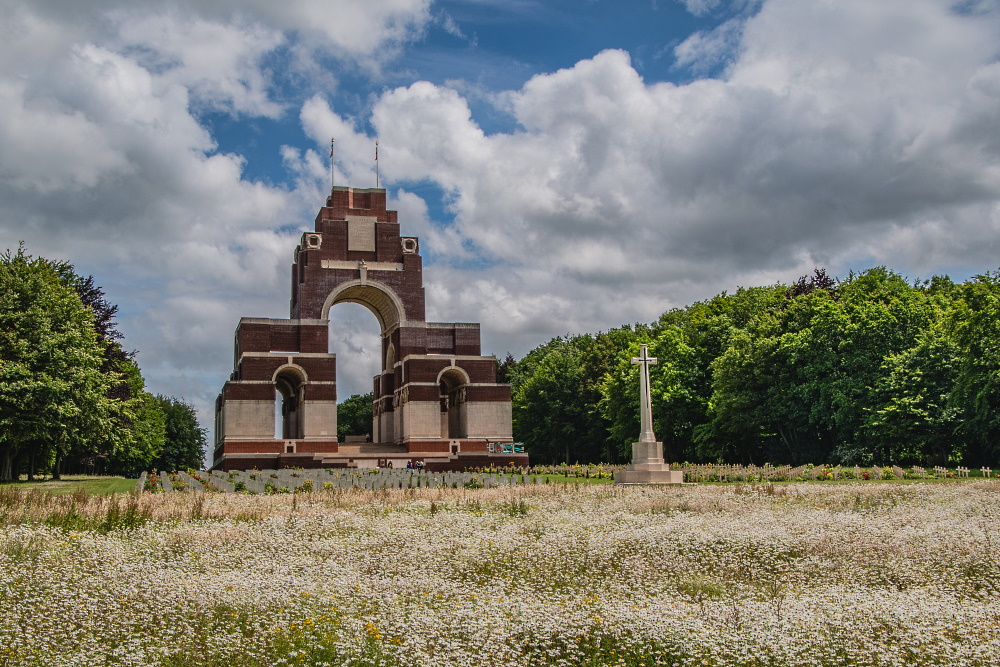 Great War Tour 26 Great War Tour 26 Lochnagar crater at Boiselle. The Royal Engineers dug a tunnel and blew the top of the German trenches on the morning of 1 July 1916, leaving this colossal hole behind.  Great War Tour 31 Great War Tour 31 The grave of the Unknown Soldier now interred in Wellington at the National War Memorial is at Caterpillar Valley Cemetery, Longueval.  Great War Tour 34 Great War Tour 34 Saw lots and lots of thes headstones.  Great War Tour 36 Great War Tour 36 The New Zealand Somme memorial obelisk at Longueval.  Great War Tour 39 Great War Tour 39 New Zealand memorials on the Western Front have the quote "From the Uttermost Ends of the Earth" written on them.  Great War Tour 40 Great War Tour 40 The striking motif placed on the display boards that can be found at all the major New Zealand battle sites on the Western Front.  Great War Tour 41 Great War Tour 41 More to come. |
|
|
|
Post by nuuumannn on Sept 27, 2019 17:29:17 GMT 12
Havrincourt Chateau. During the Battle of Cambrai in November 1917, the village of Havrincourt was stormed by British tanks. The chateau had been destroyed earlier as the Germans made way for increased defenses on the Hindenburg Line. It was rebuilt exactly as it was in 1928.  Great War Tour 46 Great War Tour 46 In the small village of Vertigneul in the yard of the local eglise is the grave of Henry James Nicholas VC.  Great War Tour 49 Great War Tour 49New Zealand headstones in Vertigneul. 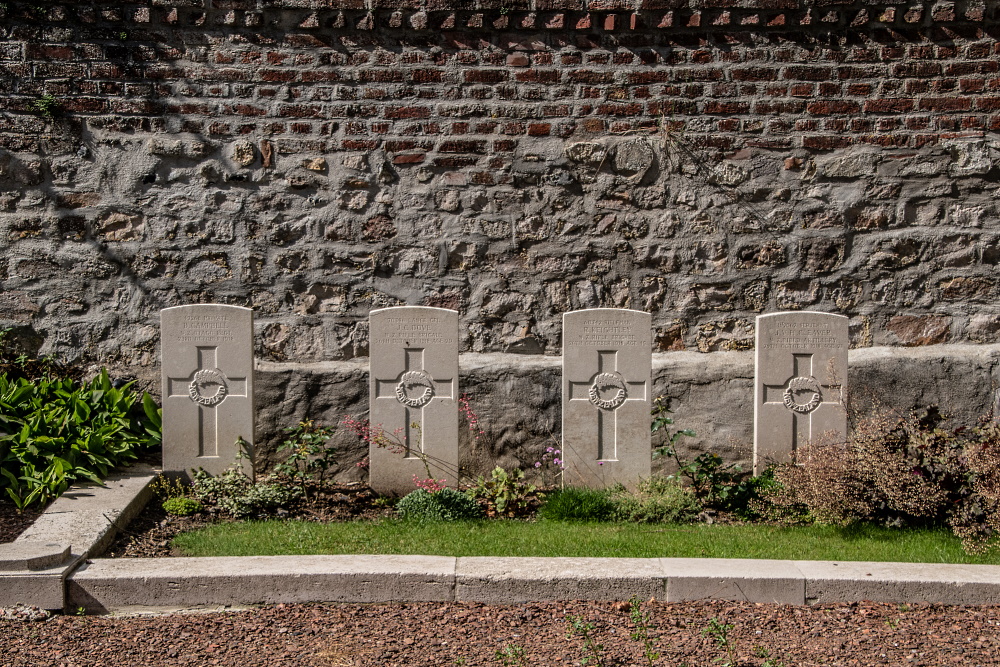 Great War Tour 50 Great War Tour 50 On the morning of 4 November 1918, New Zealand troops ran across the wall to the right and reached this point, entering the port with a ladder...  Great War Tour 54 Great War Tour 54 ...Which they pilfered from this farm yard...  Great War Tour 51 Great War Tour 51 ...Then scaled this wall, to capture the town of Le Quesnoy from the Germans, unawares the citadel had been breached.  Great War Tour 55 Great War Tour 55 The memorial plaque on the citadel wall alongside the site where the assault took place.  Great War Tour 57 Great War Tour 57 New Zealanders are fondly remembered in the fabric of the town.  Great War Tour 59 Great War Tour 59 This one, off the main square surprised me the most. 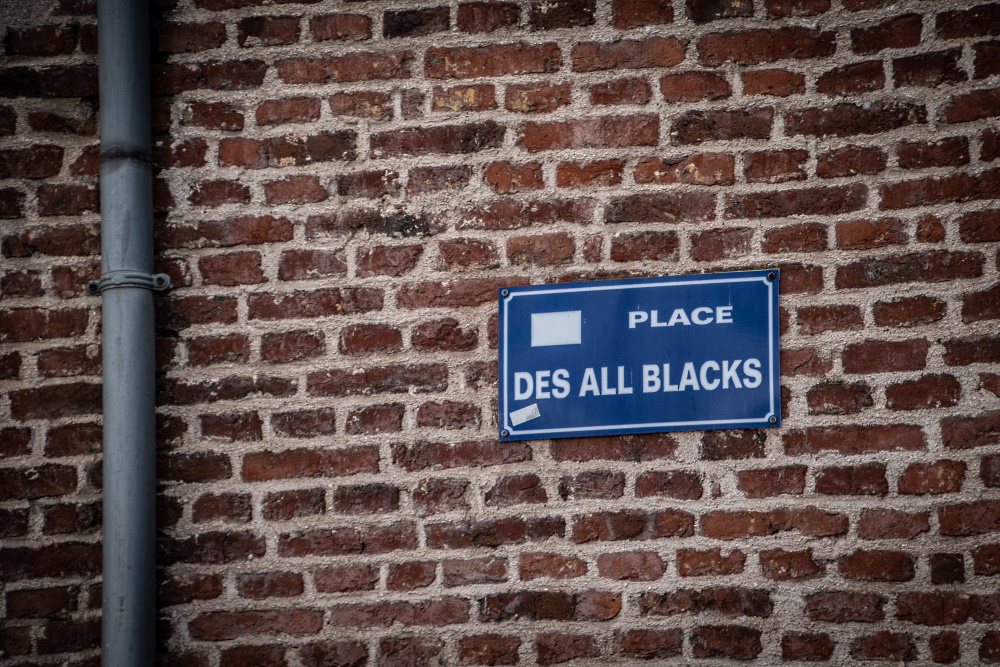 Great War Tour 60 Great War Tour 60 Inscription on the side of the town's war memorial.  Great War Tour 63 Great War Tour 63 From Le Quesnoy we travel a few hours by road north to Ieper, Belgium and visit the tranquil and lovely Ramparts Cemetery.  Great War Tour 79 Great War Tour 79 Maori Battalion graves.  Great War Tour 78 Great War Tour 78 Thanks for looking. |
|
|
|
Post by kiwiruna on Sept 27, 2019 18:16:49 GMT 12
Thank you so much for posting these and would love to see more.
Looking back on my Eurpoe trip 20 odd years ago I did get to see the Burford Kiwi but never considered visiting these sites, It was the ones in Italy I particularly wanted to have visited as my Grandfather was with 4 RMT 2NZEF.
|
|
jaybee
Squadron Leader
  
Posts: 125
|
Post by jaybee on Sept 27, 2019 18:24:46 GMT 12
Thanks for posting, great photos!
|
|
|
|
Post by Dave Homewood on Sept 27, 2019 18:51:28 GMT 12
Very poignant, thanks Grant.
|
|
|
|
Post by planecrazy on Sept 27, 2019 21:28:15 GMT 12
Very humbling, the story with the pilfered ladder was interesting, great shots thank you for sharing these.
|
|
|
|
Post by nuuumannn on Sept 30, 2019 15:34:32 GMT 12
These posts will look at sites round the battle for Messines Ridge. Now we are in Vlanderen, Flanders and south of Ieper the course of the trenches is marked with trees with coloured cages surrounding them; red for the Germans, blue for the Commonwealth. Note how close the trenches were at this point, a few kilometres from the town of Kemmel.  Great War Tour 91 Great War Tour 91 Just after 3am on 7 June 1917, in advance of the assault on Messines Ridge, the British set off mines to stun the Germans. Stun them they did; around 10,000 Germans were killed by the explosions of some 19 mines. This is Spanbroekmolen crater, which is known as the Pool of Peace. There is a story doing the rounds about Ulstermen dying after the charge was delayed and they had reached the German lines, but it might be one of those myths that has stood the test of time.  Great War Tour 90 Great War Tour 90This is Ration Farm, where the New Zealanders were billeted before the attack.  Great War Tour 93 Great War Tour 93 The view the New Zealand soldiers had of Messines Ridge as they advanced. The memorial is set on top of the German Uhlan trench. The road curving to the left is today called Niew-Zealanderstraat.  Great War Tour 98 Great War Tour 98 The New Zealand memorial on Messines Ridge, with a German machine gun bunker in the foreground.  Great War Tour 100 Great War Tour 100 The inscription on the obelisk.  Great War Tour 103 Great War Tour 103 The deeds of the Kiwis in relieving Mesen is on full display in the town. This New Zealand Soldier sculpture is on the main square.  Great War Tour 105 Great War Tour 105 The map of New Zealand outside Sint Niklaaskerk with a dot showing the location of Featherston, which Mesen is twinned with.  Great War Tour 109 Great War Tour 109 Memorial to Samuel Frickleton VC.  Great War Tour 110 Great War Tour 110 This is the crypt, within which a makeshift field hospital was set up, by both the New Zealanders and the Germans. In late 1915, a young Adolf Hitler received medical attention down here. 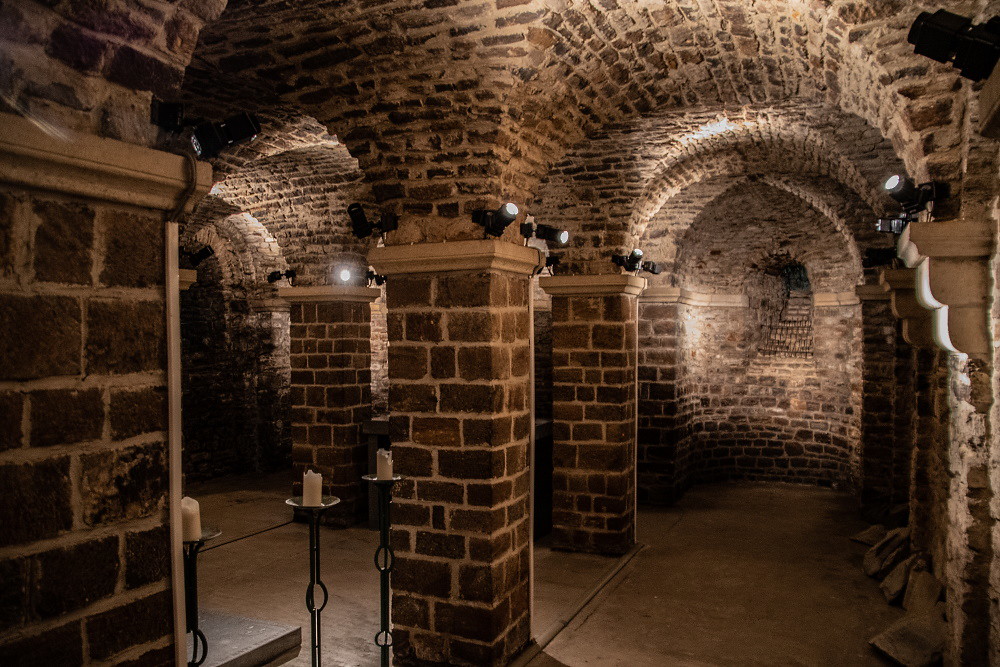 Great War Tour 115 Great War Tour 115 More to come. |
|
|
|
Post by nuuumannn on Sept 30, 2019 15:55:38 GMT 12
Outside Mesen is the Messines Ridge CWGC Cemetery.  Great War Tour 94 Great War Tour 94 Memorial to the Kiwis.  Great War Tour 95 Great War Tour 95 New Zealand units listed at the base of the memorial. 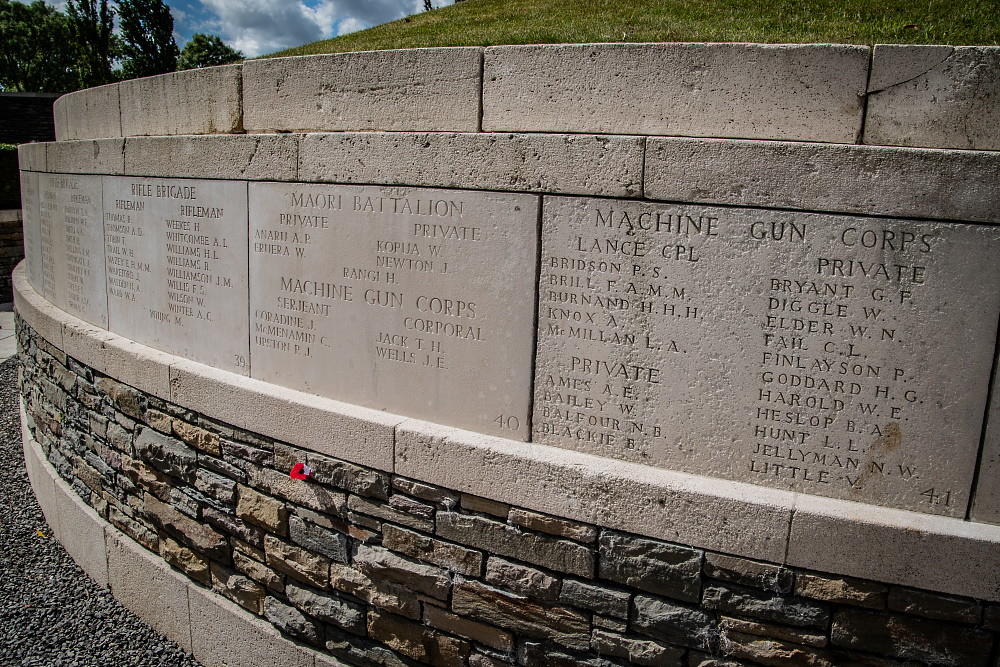 Great War Tour 96 Great War Tour 96 The earth still gives up its secrets; farmers are urged to leave found unexploded ordnance outside their gates for collection and disposal by DOVO, the Belgian unexploded ordnance firm in what's known as the Iron Harvest.  Great War Tour 97 Great War Tour 97 Next, we head to the busy market town of Poperinge, or Pops to the British. Pops was a rearward depot and rest town for the beleagured soldiers, sadly however, in this cell, deserters were held until their execution in the courtyard outside.  Great War Tour 118 Great War Tour 118 Although the execution pole is mounted outside the cells in a memorial display, this is the wall against which the convicted were shot.  Great War Tour 121 Great War Tour 121 In Poperinge was Talbot House, better known as Toc H and was a club for the wounded and weary to rest and enjoy some humanity again. it is open as a boarding house to this day.  Great War Tour 123 Great War Tour 123In the Nine Elms Cemetery is the grave of former All Black captain Dave Gallaher.  Great War Tour 131 Great War Tour 131 At Lijssenthoek were a mass of field hospitals right opposite the location of the cemetery, which is the second largest CWGC cemetery in Europe, only to Tyne Cot, near Passendale.  Great War Tour 132 Great War Tour 132 Today's headstones are laser cut, rather than hand chiselled and the difference is noticeable.  Great War Tour 136 Great War Tour 136 Finally from this corner of Flanders, this non-descript farm is the site of the original Poperinge airfield. There were four airfields to the north of Pop, this one bearing the name of the town, being the closest to it.  Great War Tour 137 Great War Tour 137 This is where the Albatros D V G'56 was captured, the aircraft in which Clive Collett lost his life in December 1917.  Great War Tour 138 Great War Tour 138 Collett is buried in Comely Bank Cemetery in Edinburgh.  Great War Tour 140 Great War Tour 140 Thanks for looking. |
|
|
|
Post by delticman on Oct 1, 2019 8:35:50 GMT 12
This is where the Albatros D V G'56 was captured, the aircraft in which Clive Collett lost his life in December 1917.  Great War Tour 138 Great War Tour 138 .An interesting set of pictures. This one I found interesting as it could be a paint scheme for one of TVAL series of Albatros DV's. I found that was supposed to be ex D2129/17 but looking at Airdrome I found this. www.theaerodrome.com/forum/archive/index.php/t-55022.html |
|
|
|
Post by nuuumannn on Oct 4, 2019 2:46:49 GMT 12
Hi Delticman, yes, G'56 was 1162/17, from what I can gather. I did some research into the aircraft when I lived in Scotland back in the 90s when I found this photo of it within the museum's collection, much to my surprise at the time I learned it was flown by a Kiwi who was buried in Edinburgh. The photo of Collett's grave dates from then. Somewhere I have a copy of his Casualty Card from the RAF Museum. I can't remember how I found out that the Albatros was 1162/17, might have been Cross + Cockade as we had the lot up to that date. I had a local aviation artist called Ron Gale research the original colour scheme and he gave me a pen sketch with the colours marked in pencil, which I still have somewhere. I wrote an article in a Scottish magazine back then called The Kiwi and the Turncoat Albatros with the following sentence:
"Piloted by VizeFlugzeugmeister Ernst Clausnitzer, Albatros D V 1162/17 was forced down intact at Poperinghe, Belgium by 2nd Lt. Langsland flying a SPAD VII of 23 Sqn on July 16 1917. Less than a month later, it had forsaken the Iron Cross for the RFC roundel and had been flown to Martlesham for evaluation by EAS."
It's also worth noting that the aircraft was fitted with a British two-pronged pitot tube, visible at the top of the left hand interplane strut.
|
|
|
|
Post by errolmartyn on Oct 4, 2019 11:31:44 GMT 12
Gents,
Vol 20, No 4, 1988 issue of the Cross & Cockade International Journal features a six-page article about G56, crediting it as 1162/17.
However, the Vol 48, No 2, Summer 2017 Journal as part of a series on captured German aircraft gives its German ID as 2129/17. Compiler Paul Leaman quotes National Archives reference AIR1/4/26/25.
Was there perhaps a correction made sometime between the two Journals?
Errol
|
|
|
|
Post by planecrazy on Oct 4, 2019 11:52:01 GMT 12
Really enjoying these pictures and and the stories behind them thank you so much!
|
|
|
|
Post by nuuumannn on Oct 5, 2019 15:24:21 GMT 12
Hm, that's interesting Errol, who knows. The AIR1 file would be an interesting read, I'm sure.
Thank you, Planecrazy.
|
|
|
|
Post by nuuumannn on Oct 5, 2019 16:07:27 GMT 12
Continuing with the photographs from the Western Front, we are still in Flanders but to the east of Pop and Mesen at a place called the Gravenstafel Spur, near the small ville of Passendale. This is the New Zealand memorial to the losses of the Battle of Broodseinde; it is located on the site of the German trenches, which was a successful action for the Kiwis, but disaster was soon to follow.  Great War Tour 143 Great War Tour 143 The wording on the obelisk.  Great War Tour 144 Great War Tour 144Plaque commemorating the Battle of Broodseinde outside Tyne Cot Cemetery. Broodseinde was fought as a part of the greater Third Battle of Ypres and was less than a kilometre from Passendale, and was the only Kiwi success of the engagements named after the nearby ville. 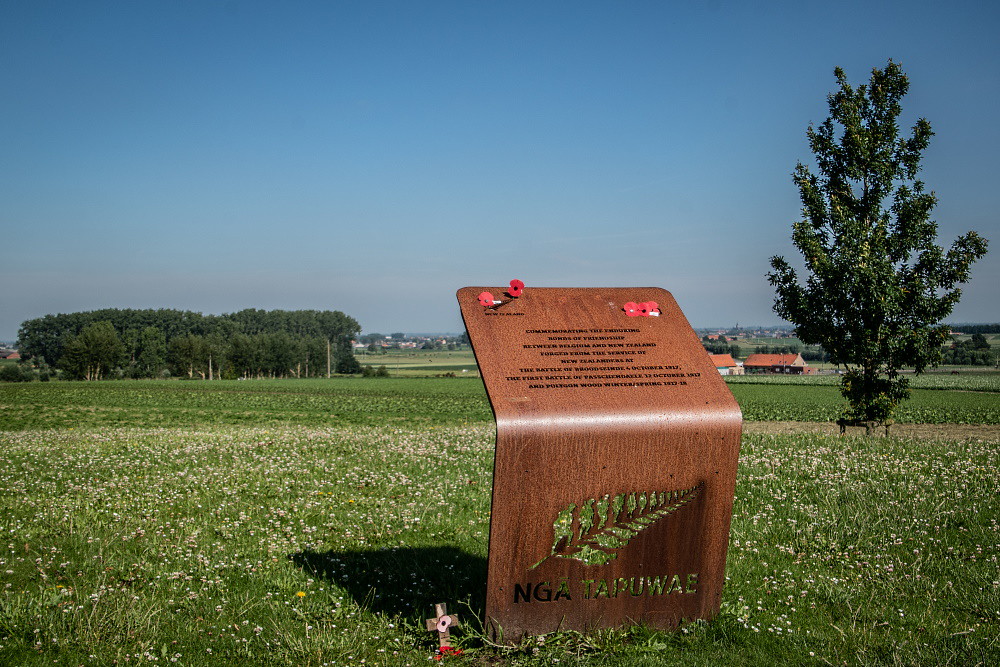 Great War Tour 146 Great War Tour 146 Tyne Cot is the largest Commonwealth war cemetery in the world. The numbers speak for themselves: there are 11,956 graves here, of which 520 are New Zealanders. The memorial commemorates the loss of 34,857 men whose last resting places are unknown, of which 1,166 are New Zealanders. 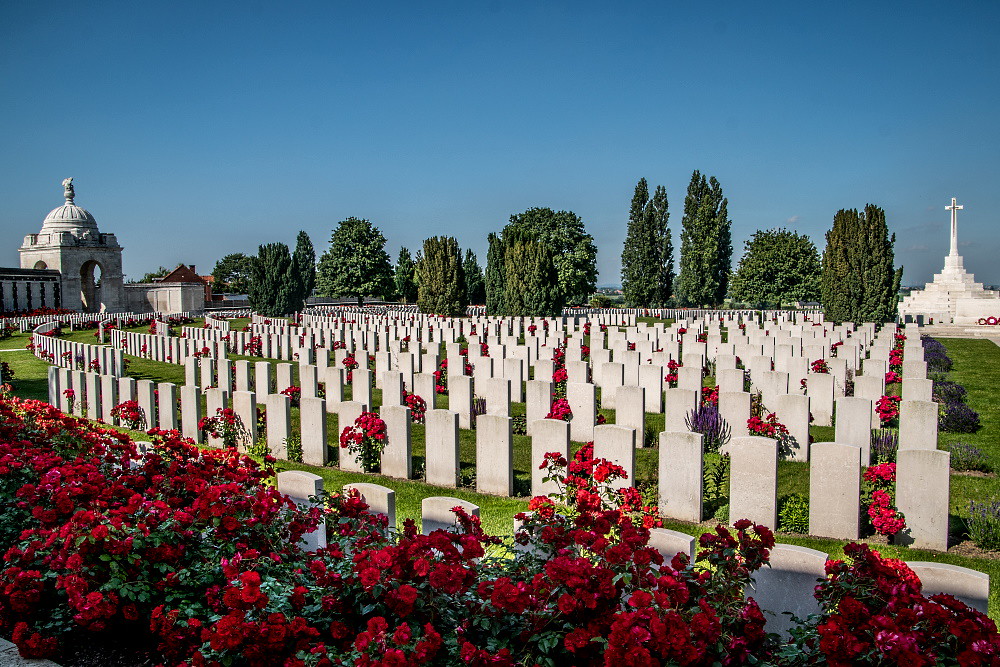 Great War Tour 151 Great War Tour 151 This is the New Zealand memorial at Tyne Cot that commemorates Broodseinde and Passchendaele, where on 12 October, New Zealand forces suffered what is considered to be their greatest military defeat - author and historian Ian McGibbon has researched that on 12 October alone, 957 New Zealanders died from their wounds, significantly higher than was previously estimated. McGibbon's book New Zealand's Western Front Campaign is a must read to gain a greater understanding of the conflict. Link to his research: ww100.govt.nz/passchendaele-casualties Great War Tour 152 Great War Tour 152A simple reminder of home.  Great War Tour 154 Great War Tour 154 An interesting mural in Zonnebeke. Note that the illustration at the bottom is based on the photos of Frank Hurley. Hurley was on Shackleton's Endurance expedition to Antarctica before the war and volunteered to go to the Western Front with his camera, where he captured some startling imagery of the campaign at Polygon Wood.  Great War Tour 159 Great War Tour 159We are now in the heart of Polygon Wood, its foliage now grown back since the war, where it was turned into the wasteland we are familiar with. Prior to the advances near Passendale, the Aussies attacked the German emplacements here, this being one of them. The Aussie advance was supported by air power in the form of aircraft from the Australian Flying Corps and Royal Naval Air Service, hence the previous mural.  Great War Tour 162 Great War Tour 162 5th Australian Divison memorial at the Buttes New British cemetery, which is largely filled with Australian graves, despite its name. Called as such because the cemetery is situalted on a rifle firing range in Polygon Wood.  Great War Tour 172 Great War Tour 172 At the Buttes Cemetery is another New Zealand Memorial To The Missing, one of seven such New Zealand memorials on the Western front.  Great War Tour 166 Great War Tour 166 There are 378 Kiwis who have no known grave that took part in Polygon Wood, largely of the Otago regiment.  Great War Tour 167 Great War Tour 167In the adjacent relatively small Polygon Wood Cemetery are largely New Zealand graves. Of the 108 Great War graves, 57 are New Zealanders.  Great War Tour 174 Great War Tour 174 More to come. |
|
|
|
Post by nuuumannn on Oct 5, 2019 16:52:14 GMT 12
The following are images from notable sites in and around this part of West Vlanderen. This is at Hooge, where the titular Hooge Crater was located. This isn't it, it has since been filled in, but is in fact two different craters caused by mine explosions detonated by the Royal Engineers in July 1915. It is located in what is now a visitor park next to a hotel.  Great War Tour 184 Great War Tour 184 The site of German trenches at Hooge.  Great War Tour 185 Great War Tour 185 Adjacent to the original German trench site is a mock up trench network, with some of that Flanders mud in evidence.  Great War Tour 188 Great War Tour 188Discarded shell casings recovered from the battlefields litter the site.  Great War Tour 186 Great War Tour 186 A view across what used to be the battlefield around the village of Hooge, which was wiped out during the fighting, from an artificial trench that is part of the Hooge Crater Museum. Those are original coiled stakes, though.  Great War Tour 191 Great War Tour 191 The Hooge Crater Cemetery on the opposite side of the road from the museum, where 119 New Zealanders are buried.  Great War Tour 192 Great War Tour 192 We are just outside Zillebeke and are at Hill 60, where the Aussie miners dug tunnels in support of the Battle of Messines Ridge. This is the result of their legacy; the Hill 60 Crater.  Great War Tour 195 Great War Tour 195 A pillbox on Hill 60. Originally built by the Germans, it was modified and extended by the Australians. The typical means of construction of Commonwealth bunkers is readily apparent; made of steel reinforced concrete, the walls were formed by sheets of corrugated iron, then the concrete was poured within and the iron sheets were removed, giving the exterior the corrugated appearance as evident. Compare with the German bunker in Polygon Wood in the previous post.  Great War Tour 197 Great War Tour 197 A walking pathway crossing the German trenches on Hill 60.  Great War Tour 198 Great War Tour 198 The German trench from the path.  Great War Tour 201 Great War Tour 201The path illustrates how close the trenches were to one another.  Great War Tour 200 Great War Tour 200 Monument to the Australian Tunnelling Company.  Great War Tour 204 Great War Tour 204 The mine crater at the Caterpillar, next to Hill 60, both of them separated by the railway line that produced the rubble that created what used to be named Côte des Amants. This mine and the Hill 60 one were set off at 3:10 am on 7 June 1917, heralding the assault on Messines Ridge - see the earlier post.  Great War Tour 209 Great War Tour 209Next, Wipers - Ypres, the town of Ieper. |
|
|
|
Post by TS on Oct 5, 2019 18:08:58 GMT 12
This is amazing to see Nuuumann. If anyone is interested in seeing Drone Videos of all these areas. Search up You Tube, Air Walks by Steve Upton. They are very interesting and informative. He has a collection of both Walks in Trenches and Drone Vids.  |
|
|
|
Post by nuuumannn on Oct 9, 2019 9:50:40 GMT 12
Thanks TS, must take a gander sometime. So, Ypres or Ieper in Flemish is famous for many things, as it was the focus of much fighting over the salient - the military term for a bulge in the battle lines and fighting in Flanders took part throughout the war over three seperate campaigns for control of this seemingly important scrap of land to the east of the town. We have covered some of the battle sites already over the First, Second and Third Battles of Ypres, but in this post we look at the picturesque town of Ieper, completely rebuilt since the war. Driving around in Vlanderen, it's remarkable that these historic wee towns are all less than 100 years old. Firstly, my hotel in Ieper is located right on the main square opposite the Cloth Hall on Grote Markt - the Regina Hotel, which itself has a secret history. During the German occupation in WW2, while officers dined in the hotel restaurant, below their feet in the basement, British airmen hid in waiting for their chance to return to the UK with the help of the local Resistance.  Great War Tour 65 Great War Tour 65The extraordinary Cloth Hall.  Great War Tour 67 Great War Tour 67 The Great War has had a profound impact on Vlanderen and to this day, at the Menenpoort, or the Menin Gate at 8pm every night the Last Post is sounded, which brings tourists from around the world. The Menenpoort from outside the city walls. Note the Ypres Lions, reproductions after the originals were looted... 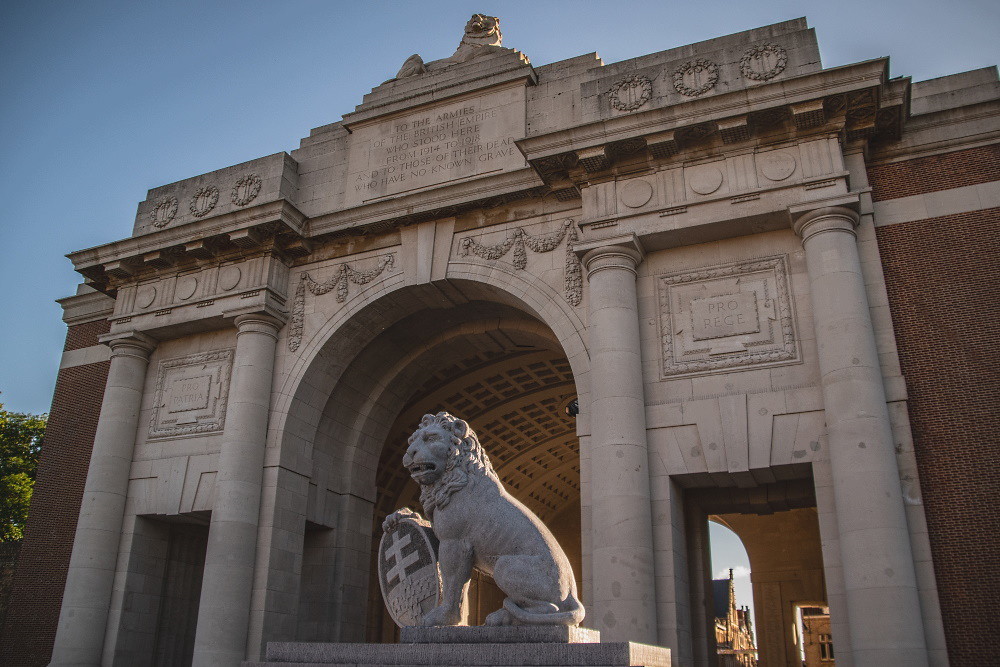 Great War Tour 69 Great War Tour 69 ...By the Australians and are on display in the Australian War Memorial in Canberra. Actually, they were donated by the Mayor of Ieper in 1936, but its fun to blame the Aussies for stealing them! They are unique survivors, as like every structure in Ieper, the original entry gate into the walled city was decimated during the war. 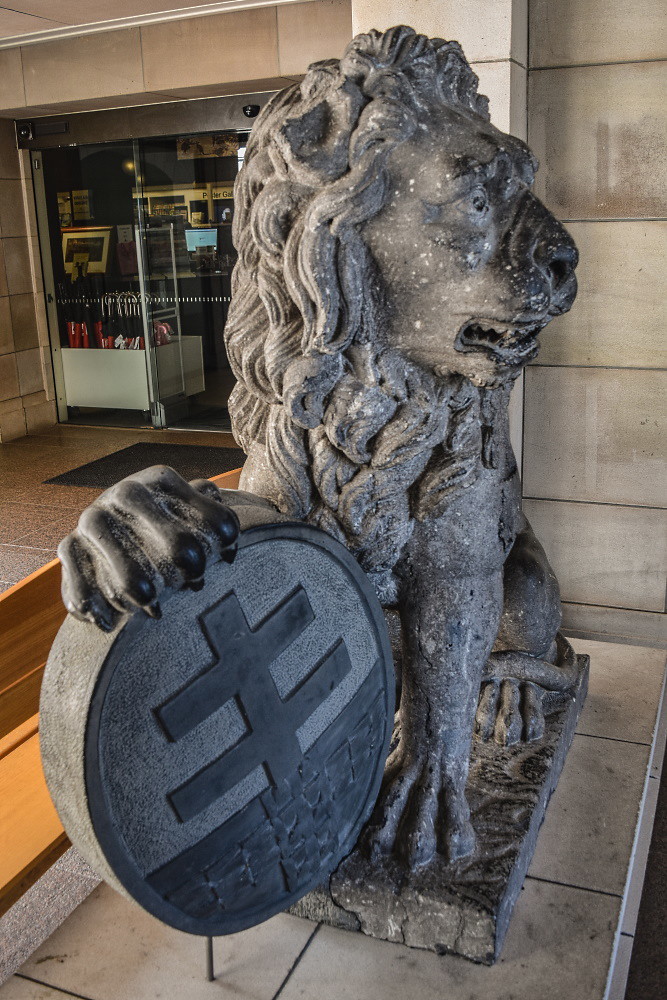 Great War Tour 70 Great War Tour 70Began in 1921, the Menenpoort is visited by millions each year.  Great War Tour 71 Great War Tour 71It is a mausoleum, but as a gate way to the town it is open to road and foot traffic.  Great War Tour 72 Great War Tour 72 On its walls are recorded the names of 54,896 missing soldiers who have no known grave. No New Zealanders are commemorated on its columns, however.  Great War Tour 73 Great War Tour 73 As mentioned, the Last Post is performed every night at 8pm and has been done since 1928.  Great War Tour 75 Great War Tour 75 Followed by a wreath laying. The entire ceremony lasts for around half an hour, after which the many bars and eateries are frequented by the many tourists who travel to watch the spectacle.  Great War Tour 76 Great War Tour 76 The Menenpoort at dusk.  Europe 454 Europe 454  Europe 455 Europe 455 More to come. |
|
|
|
Post by nuuumannn on Oct 9, 2019 10:15:54 GMT 12
More from Ieper. The Cloth Hall was completed in 1304 and was one of the largest Medieval structures in Europe. Ieper was a fabric trading town that had built its wealth on textiles, in competition with the nearby town of Poperinge, which could not match the strength of the market in Ieper, so turned to hops as its primary source of trade (producing some of that lovely Belgian beer they keep talking about!). This is a picture of the Cloth Hall, which became a symbol of the destruction wrought by the fighting on the local infrastructure on the Western Front. It can be seen in the excellent Great War Exhibition in Wellington. 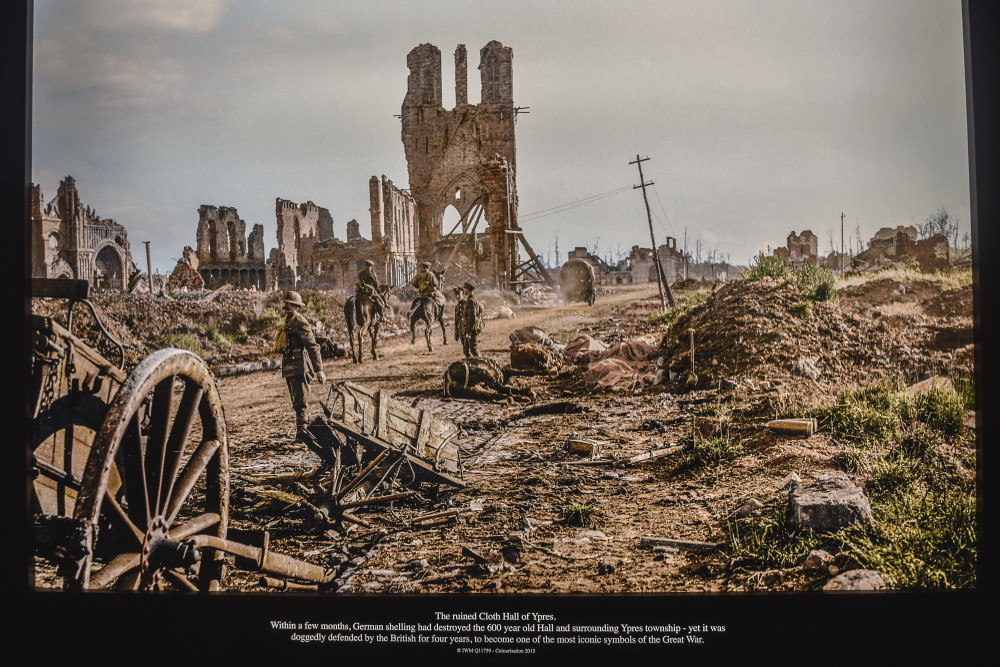 Great War Tour 68 Great War Tour 68The enormous structure's reconstruction, using as much original masonry as possible began in 1933, and was not completed until 1967.  Europe 459 Europe 459 Weather and pollutants have aged the building since its completion, giving it an historic patina. It's hard to believe it is only 50 years since its completion. 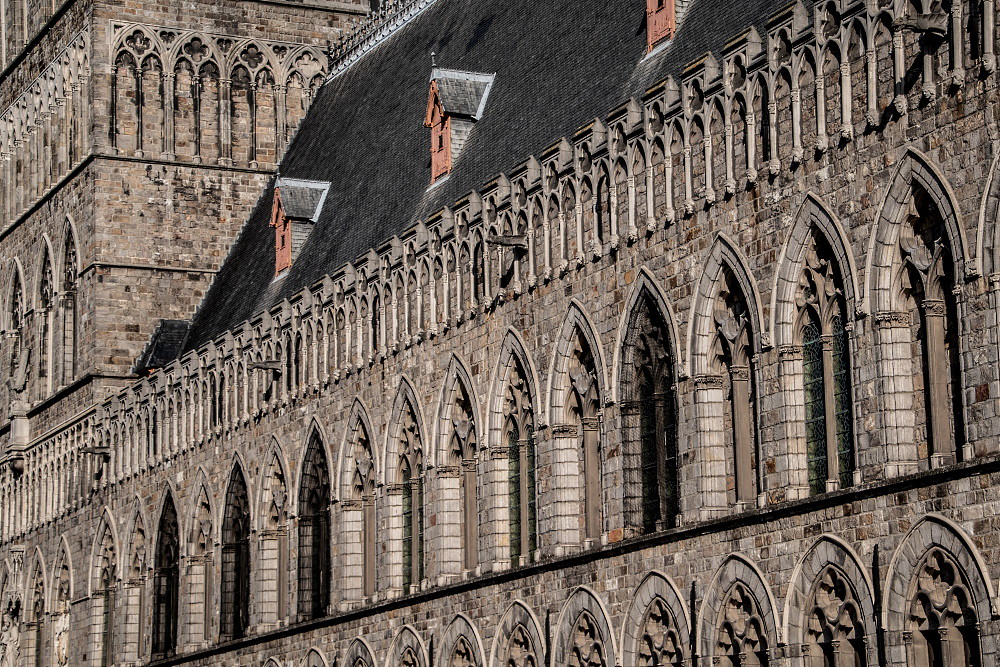 Europe 460 Europe 460 Europe 461 Europe 461 A friend of mine from the Netherlands drove down to visit me while I was in Ieper and we went on a photo sortie around the square after dinner. This is Sint Maartenskerk, next to the Cloth Hall; it is, of course a post war reporduction.  Europe 462 Europe 462 Constructed in 1230 and finished in 1370, it was ruined during the war, but reconstruction began, like the Cloth Hall using much original masonry in 1922 and finished in 1930 to the original plans.  Europe 463 Europe 463 The rear wall of the Cloth Hall betrays some of that wartime damage.  Europe 464 Europe 464  Europe 465 Europe 465 This is the spire of Sint Maarten's; it is taller than it was originally constructed.  Europe 466 Europe 466  Europe 467 Europe 467 This is the Ieper war memorial against the Cloth Hall wall.  Europe 468 Europe 468 The entrance to the In Flanders Fields Museum, located within the Cloth Hall.  Europe 469 Europe 469 The Cloth Hall facade at dusk.  Europe 470 Europe 470 A couple of spares from around the Grote Markt.  Europe 456 Europe 456 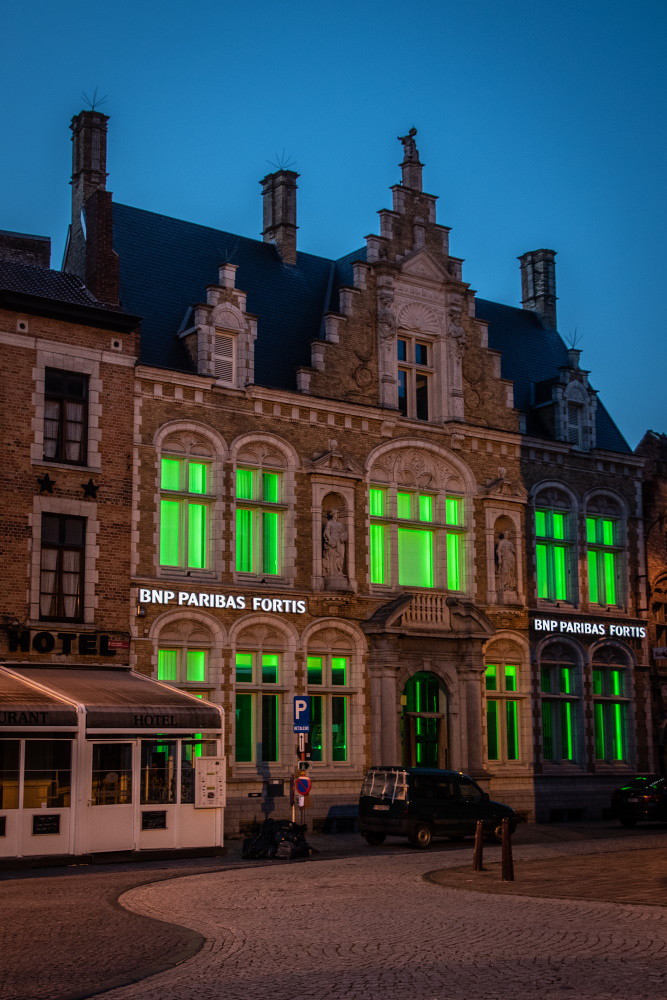 Europe 457 Europe 457 That's it from Wipers. Thanks for looking. |
|
|
|
Post by camtech on Oct 9, 2019 19:53:39 GMT 12
Interesting detail about many buildings in Ieper is that they display two dates - one showing the original construction date and the other shows the date of a rebuild following the First world War.
|
|
|
|
Post by shorty on Oct 9, 2019 21:01:45 GMT 12
When you look at the rebuilds of these buildings and how wonderful they now look you have to wonder why all the dithering about the Christchurch Cathedral was going on?
|
|